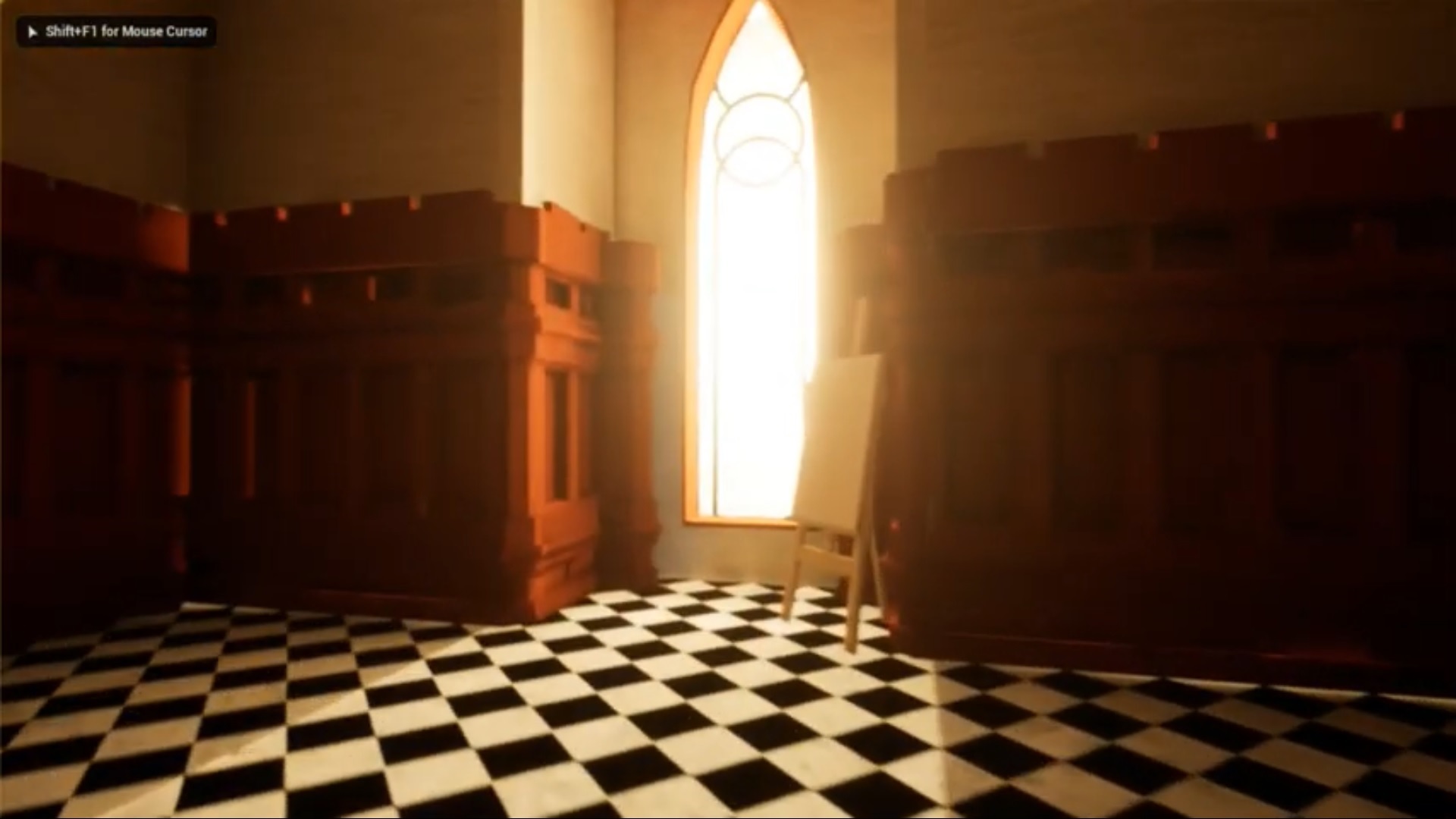My work
- Designed and implemented all of the level features.
- Modelled modular level elements and other models in Maya and Blender.
- Designed, created and implemented the level layout in Unreal Engine.
- Made the painted shader using Unreal Post Process and a C++ custom shader.
Project specifications
- University project
- Single player
- Exploration vertical slice
- Level design coursework
- Made in Unreal Engine 4
- Additional software used was Maya, Photoshop, Visual Studio
The coursework had the simple objective explained above – but to test myself and my knowledge of game development, I wanted to set some additional goals listed below:
- Develop an interactive game set in a believable environment.
- Design a level consisting of different environments: a main entrance of the mansion, a forest, and an ancient temple.
- Conceptualise and develop a range of interactions with the game world.
- Achieve appeal through style, perspective, architecture, space, objects, materials, lighting, and composition.
- Create logic with Unreal Blueprints visual scripting skills and improve my C++, here notably used for custom post-process shaders.
- Design a satisfactory User Experience by developing a diegetic User Interface with narrative relevance.
- Develop a game project from start to end, managing priorities and covering all the roles myself, from programmer to artist.

Gameplay Overview
The player impersonates the son of a famous painter, known as Ulysses, who went missing two years earlier. The main character soon finds out that his father’s paintings are worlds that can be accessed and explored. Throughout the level, the player can collect clues and add them to their Notepad in the form of sentences. By connecting different sentences, the character can form “thoughts” that allow further progression in the game, unlocking new interactions and clues.

Development workflow
The project was a challenge I set for myself and an incentive to show my level design skills and to apply most of what I learned during the first two years of study. Accurate planning and advanced techniques allowed me to save time during the whole project. For instance, for the art assets of the level, I created a modular set of pieces to be able to reconfigure the design of the level layout, if needed.
To sum up my work on this project, here is a sorted list of the tasks I completed from start to end:
- I started by creating a definite list of objectives for the player: what were the important interactions? How should the gameplay provide the feeling of progression?
- Using Jacobean mansions as a visual reference, I created a level layout which could lead the player into completing tasks. The level has several level design devices for guiding the player: signposting, navigational aids, audio cues and others.
- I greyboxed the whole level to create the logic and the progression of the main quest.
- Game mechanics scripting and implementation: through Unreal Blueprints I created the final experience of the game, without the art assets. At this point, the game was entirely playable.
- I then created sketches of interiors with the objective of creating a set of modular art assets.
- 3D and 2D assets creation: using Maya, Blender, and Photoshop, I created the assets in the game, both in the 3D space and as the interactable UI.
- Editor implementation and final tests: the last week before the deadline I implemented the art and tested the whole vertical slice.
During this coursework, I created a polished interactive experience by myself. As I had been practicing art assets production since middle school, that part of the coursework was not difficult for me, but it was still useful to apply professional techniques and work on a tight deadline (2 months). Also, I had the chance to use my C++ knowledge and for the first time I created a custom shader in Unreal Engine. In the end, this assignment was a useful test for what I learnt during half of my academic path. The same test was then repeated at the end of my degree, with my dissertation project.
